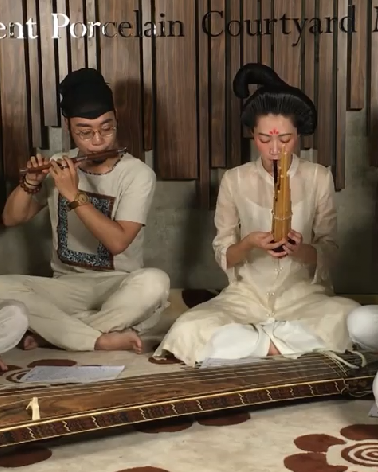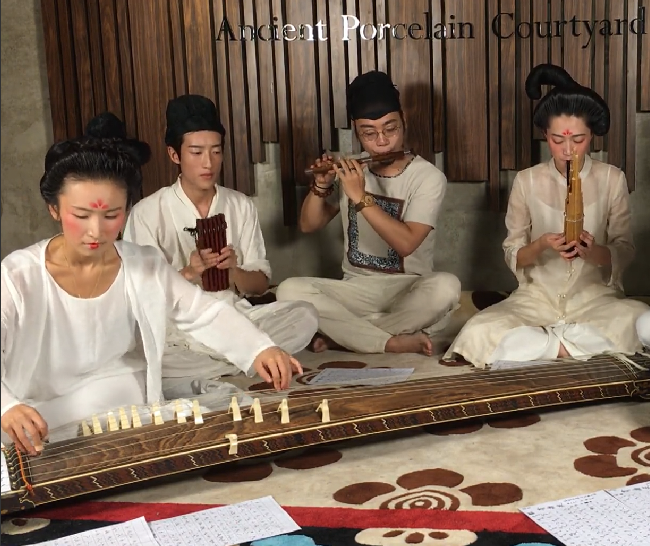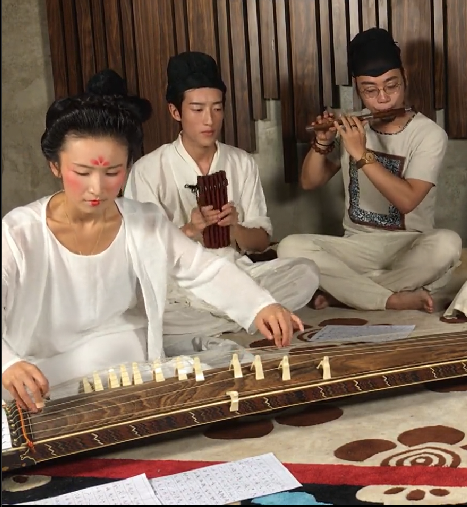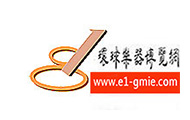Tang Dynasty music: “The Waves of Kokonor” (Qinghai Bo, 青海波)
Music affecting Korea and Japan
dbadagna
订阅419 2,792次观看
2017年5月6日发布
A performance of “Qinghai Bo” (青海波, The Waves of Kokonor), a Tang-era yanyue piece preserved in Japan.
Performed by the Tang Music and Dance Recovery Group (Tang Yuewu Fuyuan Zu, 唐乐舞复原组), which is based in Beijing, China.
Personnel:
● Hengdi (横笛) – Xu Yaozhu (徐遥祝)
● Bili (筚篥) – Hu Meiling (胡美玲)
● Sheng (笙) – Wang Beibei (王贝贝)
● Zheng (筝) – Liu Yiman (刘一曼)
● Pipa (琵琶) – Xu Ge (徐戈)
● Paiban/conductor (拍板/指挥) – Gao Weihao (高伟豪)
The performance probably took place at the Ancient Porcelain Courtyard Museum (老窑瓷博物馆) in Beijing, which opened in May 2016.
A detailed overview and transcription in staff notation of this piece may be found in the following source: Wolpert, Rembrandt; Allan Marett; Jonathan Condit, and Laurence Picken. “‘The Waves of Kokonor’: A Dance-Tune of the T’ang Dynasty.” Asian Music, v. 5, no. 1, Chinese Music Issue (1973), pp. 3-9.
唐乐古谱复原演奏《青海波》
《青海波》各乐器曲谱信息:唐横笛:《新撰乐谱横笛卷四》享保十六年写本(原谱为康保二年)、唐曲项琵琶《三五要录》保元四年、唐十三弦筝:《仁智要录》保元四年、唐十七簧笙:《新撰笙笛譜》正安四年、唐筚篥:《万乐和汉考《筚篥谱》》享保十九年。
评论 (24)
发表公开评论…
热门评论
Borotos Oenphatoris1 天前
看來唐朝音樂影響朝鮮和日本
回复
查看所有 4 条回复
Neophyte2 个月前
Here’s a rendition of a gagaku piece reconstructed to sound as it did back in the Heian period. It seems to match the general tempo and sound of this reconstruction https://youtu.be/XYpfBDcHJJg
回复
查看所有 3 条回复
Ryan Mbira3 个月前
beautiful!
回复
Zygmunt Nowak5 个月前
It sounds completly different from Tomoko Sugałara’s interpretation of this melody on kugo. The bili feels a bit too hard on my ears but otherwise it’s a preety cool performance.
回复
查看所有 5 条回复
Kevin Tien5 个月前
Thank you for the upload! I was curious, is there actual historical evidence indicating that ‘qinghai’ in the title in fact refers to the modern-day Qinghai/Kokonor Lake?
回复
唐文化源源不断的输入日本,对日本的社会产生了多方位的深远影响:
政治方面:
贞观十九年(645年)日本进行了大化改新这次改革,在中国长期留学的高向玄理和僧旻起了很大作用。他们参考了隋唐的均田制和租庸调制,实行班田收授法;他们仿照隋唐的官制,改革了从中央到地方的官制;参照隋唐律令,制定了《大宝律令》。
建筑风格方面:
公元709年,日本迁都平城京(今奈良),都城的建设规模完全模仿长安,甚至街道的排列方法也几乎一样,也有“朱雀街”“东市”“西市”等名称。8世纪后期,日本又迁都平安京(今京都),仍仿长安建都城。
语言文字方面:
8世纪以前,日本使用汉字作为表达记述的工具。留学生吉备真备和学问僧空海和尚,在日本人民利用中国汉字的标音表意基础上,创造了日文假名字母——片假名和平假名,大大推动了日本文化的发展。同时,日文的词汇和文法也受到汉语的影响。 日本人的生活习尚、节日风俗也都受到唐朝的影响。
教育方面:
天智天皇在京都设立大学,后来学制逐渐完备,学习的内容与唐时期大体相仿。
文学方面:
唐代丰富多彩的文学,深为日本人民欣赏。唐朝著名诗人的诗文不断传入日本,形象鲜明,语言通俗的白居易尤为日本人民喜爱。
艺术方面:
唐朝的音乐、绘画、雕塑、书法、工艺美术等也纷纷传入日本,日本吸取了唐朝的乐制,宫廷还请唐乐师教授音乐,唐朝的不少乐书、乐器陆续传入日本唐朝的绘画也深受日本人喜爱,唐人的绘画经日本画家仿效摹绘者,称为“唐绘”。
科学技术方面:
唐朝先进的生产技术、天文历法、医学、数学、建筑、雕版印刷等陆续穿入日本。
生活习俗方面:
唐人所喜爱的马球、角抵、等体育活动先后传入日本。茶叶于奈良时期传入日本,开始当做药材,到平安时期已经兴起了喝茶之风。




Music affecting Korea and Japan
Political aspects:
Zhenguan nineteen years (645 years) in Japan were Taikanokaishin this reform, in the long term study Chinese takamuko no kuromaro and min monk played a big role. They refer to the Sui and Tang Dynasties Juntianzhi and zuyongdiao system, the implementation of Handenshuju; they modeled the system reform of the Sui and Tang Dynasties, from central to local government; according to Sui and Tang law, formulated the “Taiho code”.
Architectural style:
In the year 709, the Japanese capital Pyongsong Beijing (now Nara), the capital construction scale completely imitate Changan, even the street arrangement method is almost the same, there are “Suzaku Street” “East” “West”. In late eighth Century, the Japanese capital Jing Ping (now Kyoto), still imitation of Changan construction capital.
Language aspect:
Before eighth Century, Japan used Chinese characters as a tool for expressing accounts. Students kibino makibi and learning Konghai monk, the Japanese people use Chinese Chinese characters of phonetic ideographic basis, created the Japanese kana letters, katakana and Hiragana, greatly promoted the development of Japanese culture. At the same time, the vocabulary and grammar of Japanese are also influenced by chinese. Japanese life customs, festivals and customs are the impact of the Tang dynasty.
Education aspect:
The establishment of emperor Tenji University in Kyoto, later educational system gradually perfect, learning content and similar period of Tang dynasty.
Literature aspect:
The rich and colorful literature of the Tang Dynasty deeply appreciated the Japanese people. The poems of the famous poets in Tang Dynasty were introduced into Japan constantly. The image of Bai Juyi was very popular, especially the Japanese people.
Artistic aspects:
The Tang Dynasty music, painting, sculpture, calligraphy, arts and crafts have also introduced to Japan, Japan from the Tang Dynasty palace music system, please Tang musicians professor of music, musical instruments, many music book of Tang Dynasty gradually introduced into Japan in Tang Dynasty painting by Japanese love, Chinese painting by the Japanese artist copy copy, said “Tang painting”.
Aspects of science and technology:
The advanced production technology, medicine, mathematics, astronomy, architecture, etc. have penetrated into Japanese woodblock printing.
Aspects of life and customs:
People like polo, wrestling, and other sports activities has spread to japan. In the period of Nara tea was introduced to Japan, began as a medicine to the Heian period has been the rise of the tea wind.
视频来源网络 !如有侵权 ,请联系删除 论点和本频道无关
Video source network! If there is infringement, please
contact delete.
未经允许不得转载:環球樂器博览网 » 那些年 影响朝鲜日本的音乐《青海波》
 環球樂器博览网
環球樂器博览网
评论前必须登录!
登陆 注册